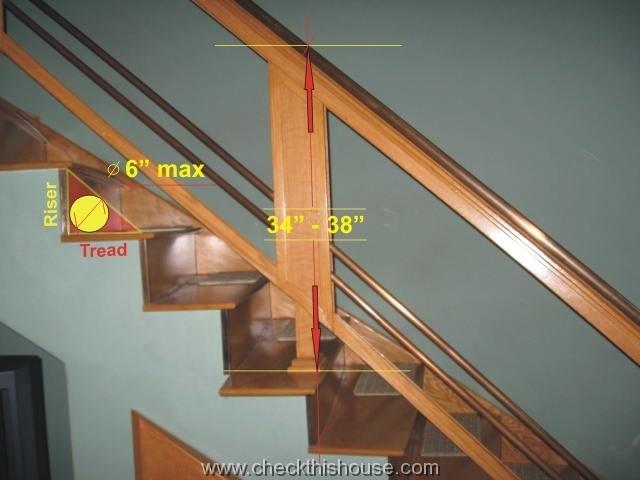
 With stair handrails and guardrails safety, it is the same concept as with many other requirements guiding our daily commute. We often believe these rules are created for others only, until we suddenly realize that there’s nothing to hold on to when gravity’s force pulls our body down the stairs with an increasing speed.
With stair handrails and guardrails safety, it is the same concept as with many other requirements guiding our daily commute. We often believe these rules are created for others only, until we suddenly realize that there’s nothing to hold on to when gravity’s force pulls our body down the stairs with an increasing speed.
That’s why somebody came up with a list of rules for stair handrails and guardrails safety (click on each pictures for details):
Stair handrails and guardrails safety #1.
 The stair handrails must be graspable, and the best shape / size to put your grip on must have a 1¼” – 2” circular shape cross section (preferably circle, but square, or a section of the square with rounded edges and a groove for your fingers, is also acceptable). Flat boards, 2”x4”, or anything else that you can’t close the palm of your hand on, is not acceptable by the building code.
The stair handrails must be graspable, and the best shape / size to put your grip on must have a 1¼” – 2” circular shape cross section (preferably circle, but square, or a section of the square with rounded edges and a groove for your fingers, is also acceptable). Flat boards, 2”x4”, or anything else that you can’t close the palm of your hand on, is not acceptable by the building code.
Stair handrails and guardrails safety #2.
The stair handrails attached to the wall should not project further than 3½” into the stairway (some jurisdictions accept 4½” max distance). The distance between the handrail and the wall should not be less than 1½”. This is to keep your fingers from getting trapped between the wall and the stair handrail, and give enough clearance for your hand.
Stair handrails and guardrails safety #3.
Any stairs with 4 risers or more require handrails. Risers are the boards between the steps (treads); of course you may just have an empty space between each tread in which case handrails would be required as well.
Stair handrails and guardrails safety #4.
The required stair handrails height is between the 34” and 38”
Stair handrails and guardrails safety #5.
When you attach the stair handrail / handrail brackets to the wall, make sure that they are secured with proper screws to the wall framing, not to the drywall sheet.
This is because they have to support a 200 lb load applied at any point of the stair handrail in any direction. Brackets may often be supplied with small, plastic anchors which provide no support whatsoever when used in drywall, and even a small child can pull it off the wall.
Stair handrails and guardrails safety #6.
The ends of the stair handrails attached to the wall should return to that wall. They’re not supposed to be open like on the picture, because when you’re carrying a shoulder bag, or even wearing a jacket, it might get caught up on that section of the handrail and you’ll either ruin your wardrobe or loose balance and fall down the stairs.
If you have a navel post at the end of the handrail, the handrail should return to this post or volute. Also, the stair handrails should extend to area above the top and bottom nosing of stairs.
Stair handrails and guardrails safety #7.
This one is extremely important if you or your visitors have small children. If you have a 4” diameter ball handy, it should not pass through any of the openings along the stair handrails and guardrails (guardrail pickets for example).
The only exception is that triangular space between the riser, tread, and base of the guardrail – a 6” max diameter is permissible in this area. If you don’t have risers and there is an open space underneath treads, the 4” max applies there as well. If your ball fit through any of the openings, a small child’s head may as well.
Stair handrails and guardrails safety #8.
The stair guardrails are required on any walking surface elevated 30” or higher above the floor / grade.
Stair handrails and guardrails safety #9.
Stair guardrails in single family properties must be a minimum of 36” high from the walking surface (balconies, decks, galleries) and no climbable / horizontal bars – kids love climbing.
So how is stair handrails and guardrails safety in your house ?













Comments are closed.